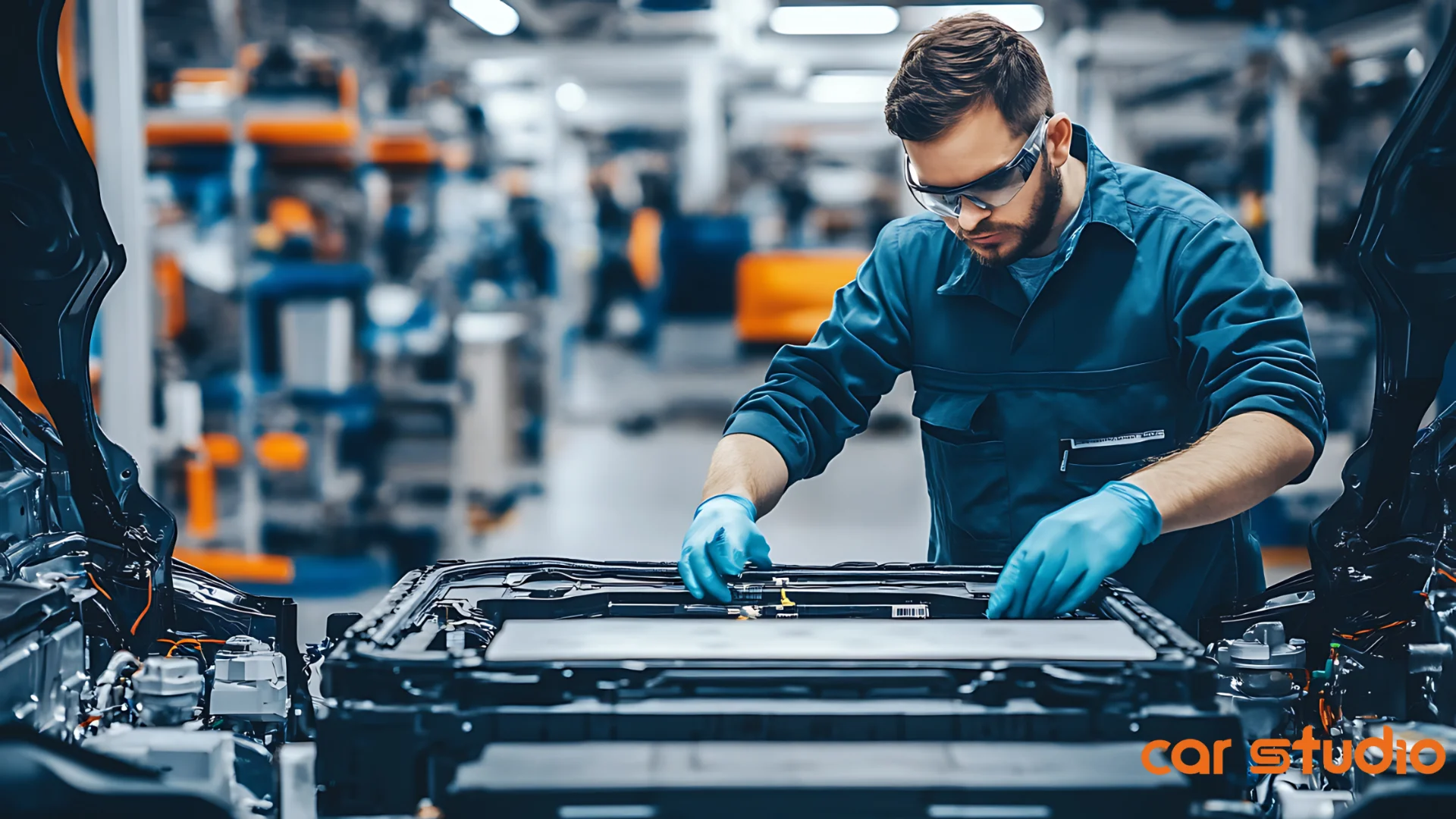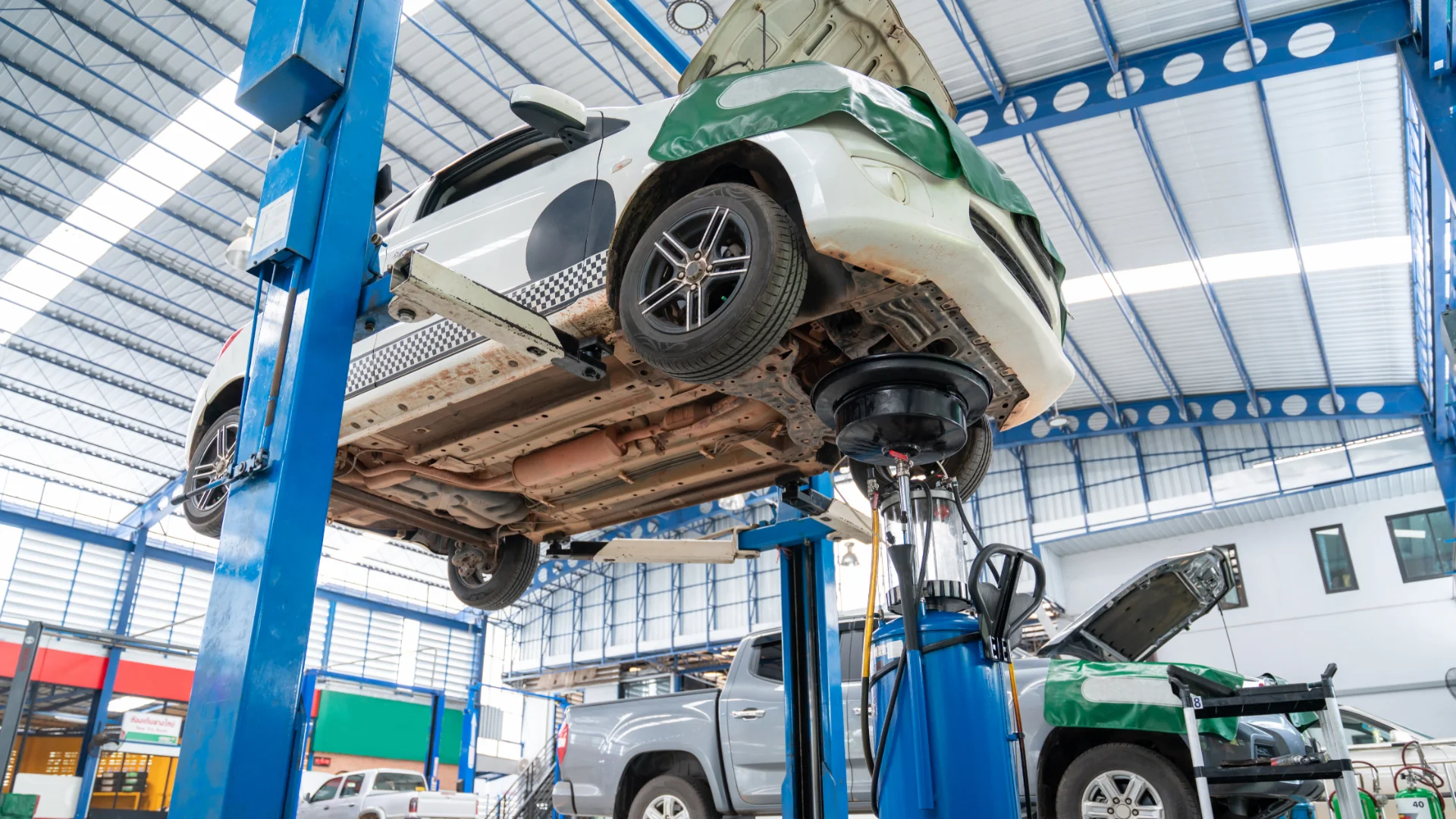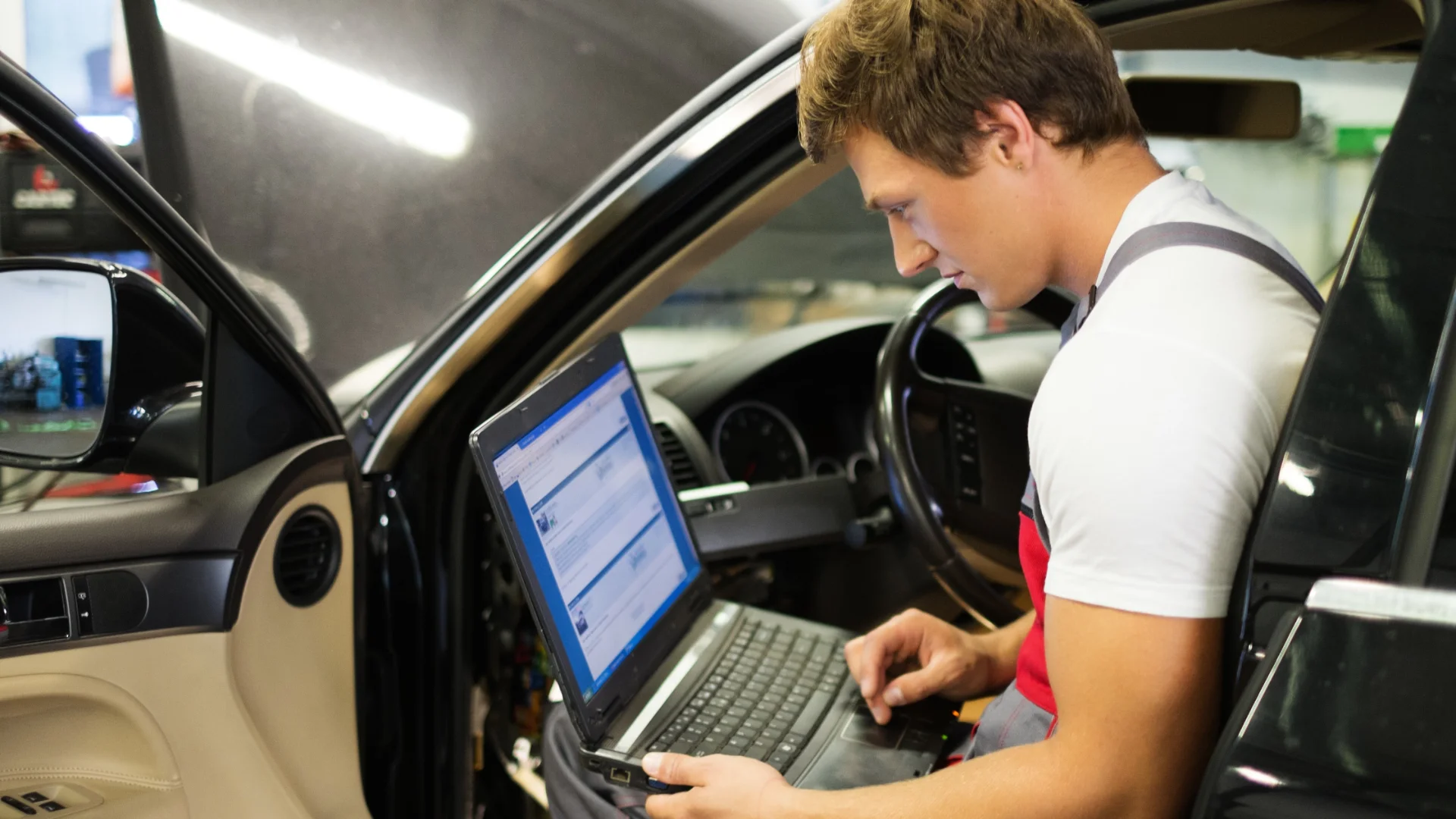
How AI Blue-Book Tools Predict Used Car Value from Images
Table of Contents
How AI Blue-Book Tools Predict Used Car Value from Images
Introduction: From Stress to Simplicity
Picture this: you’re standing in your driveway, phone in hand, circling your car to snap photos before posting it online. Maybe you’ve washed it, maybe you’ve even vacuumed the seats, but one question lingers in your mind: “What’s this car really worth?”
If you’ve ever sold a used car, you know the mix of emotions excitement at the thought of a new ride, anxiety about getting a fair price, and confusion over wildly different valuations from dealerships, online calculators, or friends who “know a guy.”
Traditionally, the process felt almost like haggling at a bazaar. You’d rely on an “expert” eye, maybe someone tapping the tires, checking the mileage, and making a judgment call that was as much art as science. Sometimes you’d get lucky. Other times, you’d drive away with a nagging feeling that you left money on the table.
But things are changing. Artificial Intelligence the same technology that can recommend your next Netflix series or recognize your face to unlock your phone is now being used to predict your car’s value from just a few photos. These AI-powered “blue-book” tools are rewriting the rules of the used car market, promising speed, accuracy, and fairness at a scale we’ve never seen before.
The Shift from Gut Feeling to Data Science
In the old days, a car’s value was largely tied to human judgment. One dealer might be conservative, another optimistic. Add in personal biases maybe they dislike your car brand, or maybe they think bright yellow cars never sell and you had a recipe for inconsistency.
AI flips that script. Instead of relying on hunches, it leans on patterns buried in millions of transactions. Algorithms trained on photos and price histories learn to “see” what experts see dents, scratches, paint shine, trim quality but also things humans might miss, like subtle aging of upholstery or telltale signs of rushed DIY fixes.
It’s like replacing an opinionated appraiser with a hyper-focused, data-driven analyst who has memorized the outcome of every used car sale in the past decade.
And unlike people, AI doesn’t get tired, cranky, or swayed by the weather. It just processes the facts.
Under the Hood: How AI Blue-Book Tools Work
1. Image Recognition Meets Machine Learning
At the heart of these tools is computer vision the ability of machines to interpret and classify images. Just as Instagram filters can spot faces or Google Photos can recognize your dog across 500 pictures, AI blue-book tools identify key car features:
The system then matches what it “sees” with pricing patterns from historical sales.
2. Data, Data, Data
But photos are only one side of the equation. These models are trained on enormous datasets: millions of car listings, auction results, dealership records, and even regional price fluctuations. By cross-referencing this information, the AI isn’t just giving you an abstract guess it’s giving you a market-reflective snapshot of what buyers in your area are likely to pay today.

This ties directly into a theme we explored in our Car Maintenance Essentials guide: maintaining your car well doesn’t just matter when a mechanic looks under the hood AI tools also reward visible signs of care, like clean paint and intact trim, because the market consistently values them.
3. Continuous Learning
Unlike static valuation tables, AI blue-book tools keep learning. Every new transaction, every new uploaded image, every new regional trend feeds back into the model. That’s why a three-year-old car might get a surprisingly high valuation during a shortage, or why flashy aftermarket rims might hurt value if the data shows they scare buyers away.
Benefits of AI in Car Valuation
Speed and Efficiency
What used to take hours waiting for a dealer’s call, scheduling an inspection, second-guessing the outcome now takes minutes. Snap photos, upload them, and get a valuation that’s market-calibrated.
Imagine being a dealership with hundreds of cars cycling through every month. The time savings alone is enormous. But even as a single seller, the peace of mind from instant feedback is worth gold.
Accuracy and Objectivity
No more haggling over whether your car is “clean” or just “average.” AI uses the same standard for everyone. It doesn’t care if you’re a smooth-talking negotiator or someone posting their first car online. The valuation is data-first, not personality-first.
This also ties into merchandising. In our Cost vs Conversion blog, we showed how professional-quality photos can dramatically boost sales conversions. AI valuation tools feed off those same images. Better lighting, clean presentation, and consistent backgrounds not only impress human buyers but also help AI models make a clearer, more accurate read on your car’s condition.
Scalability
For platforms like Carvana, AutoTrader, or dealership networks, AI isn’t just a nice-to-have it’s survival. Manually valuing thousands of vehicles is impossible. AI scales effortlessly, offering consistent valuations across massive inventories.
And it’s not just for giants. Independent dealers and even individual sellers can now access AI-powered tools once reserved for enterprise platforms, leveling the playing field.
Challenges and Blind Spots
Of course, no technology is flawless. AI valuations have their limits, and understanding them helps you use these tools wisely.
1. The Data Dependency Problem
AI is only as good as the data it’s trained on. If the dataset underrepresents certain models, trims, or rare configurations, valuations can skew. Imagine owning a limited-edition sports model in a region where hardly any have sold the AI might undervalue it simply because it lacks enough comparisons.
2. Invisible Mechanical Issues
AI looks at what’s in front of the camera lens. It can spot scratches, fading, or a missing hubcap but it can’t detect a failing transmission, an old timing belt, or a suspension squeak. These hidden problems can still tank resale value once a buyer inspects the car in person.
This is why maintenance matters. In our Top Car Maintenance Tips, we stressed that keeping records and doing preventative servicing builds buyer confidence. An AI tool may not “see” your fresh oil change, but presenting receipts alongside a strong AI valuation can seal trust.
3. Bias in the Algorithm

If past sales data reflects consumer biases say, undervaluing certain car colors or penalizing non-luxury brands the AI might unknowingly reinforce them. This is not unlike how credit algorithms can reflect systemic inequalities. Transparency and oversight will remain crucial as these tools spread.
The Human + AI Partnership
So, should you blindly trust an AI blue-book number? Not exactly. The real power comes from combining human intuition and AI objectivity.
Think of AI valuation as the GPS of car pricing. It shows the most efficient route, but you, the driver, decide when to take a detour.
Future of AI Car Valuation
We’re only scratching the surface. Here’s where things are heading:
1. IoT-Enabled Diagnostics
As cars become “connected,” AI won’t just rely on photos. Imagine uploading real-time health data: tire pressure, engine wear, battery cycles for EVs. That would give buyers a near-complete picture before ever seeing the car.
2. Blockchain Service Records
Maintenance history is often fragmented some at the dealership, some in local garages, some missing altogether. A blockchain-backed record could lock in every oil change, repair, and inspection, creating a transparent, tamper-proof service book. AI valuations that integrate this data would be far more bulletproof.
3. Immersive Merchandising
In our ROI of Merchandising blog, we showed how professional visuals can swing buyer decisions. The next frontier? Virtual reality showrooms where buyers can walk around a 3D model of your car with AI valuation updating in real time as they “inspect” details.
4. Hybrid Trust Models
We’ll likely see new standards where AI valuations are combined with certified third-party inspections. Insurance companies, lenders, and even governments may eventually require both data sources before approving loans or policies.
Conclusion: Making Car Selling Less Stressful
At its heart, selling a car is about trust. Buyers want to believe they’re getting value for money. Sellers want to feel they aren’t being shortchanged.
AI blue-book tools don’t eliminate every uncertainty, but they bring transparency to a process that’s often murky. They turn your car photos into data-backed confidence, giving you leverage whether you’re a private seller, a dealer, or just someone curious about their car’s worth.
And when combined with smart maintenance, good merchandising, and human judgment, AI becomes less of a replacement and more of a partner a co-pilot guiding you toward a fairer, faster, and less stressful car-selling journey.
So the next time you circle your car with your phone camera, don’t just think “I hope these look good.” Think: “These photos are about to unlock my car’s true market story.”

FAQ (Expanded)
Q: How do AI blue-book tools differ from traditional valuation?
A: Traditional valuations rely heavily on human judgment an appraiser, dealer, or even an “industry guidebook” that provides average values. The problem is, humans bring bias and inconsistency. One dealer may love Toyotas and give you a generous offer; another might be skeptical about resale demand and undervalue the same car.
AI, on the other hand, doesn’t rely on gut feelings. It compares your car against millions of historical transactions, photos, and price trends in real time. That’s why results often feel more objective and market-driven.
A good example: a friend of mine recently tried to trade in her compact hatchback. The dealership offered her $6,500, arguing that demand for small cars had dipped. She decided to run the car through an AI valuation tool out of curiosity. The AI, pulling on live market data, suggested $7,800. She trusted the number, listed the car privately for $7,600, and sold it in just two days. The AI gave her confidence to push back against the lowball offer — and it paid off.
Q: Can AI detect hidden problems?
A: Not yet and this is an important limitation to remember. AI excels at spotting visible clues: paint scratches, body alignment, faded upholstery, missing trims. But it can’t “hear” a rattling gearbox, smell burnt oil, or sense a weak alternator.
That’s why maintenance records remain priceless. If you’ve been diligent oil changes on time, brake pads replaced before they wore thin, timing belt serviced at the manufacturer’s interval keep those receipts. Pairing an AI valuation with a tidy service record shows buyers that the value isn’t just skin-deep.
One independent dealer told me that when cars came with clean, scanned service histories even if they had a few cosmetic blemishes buyers often trusted them enough to pay above the AI estimate. In other words, AI sets the baseline, but proof of care can lift the final sale price higher.
Q: Are AI valuations accepted by institutions?
A: The short answer is: increasingly, yes. Banks, leasing companies, and insurers are starting to recognize the efficiency and fairness of AI-powered appraisals. In fact, in parts of the US and Europe, certain financial institutions already accept AI valuations for loan approvals and insurance payouts.
Why? Because AI reduces disputes and inconsistencies. If a customer challenges a payout, insurers can point to the AI’s data-backed assessment rather than just one adjuster’s opinion. For lenders, it speeds up the approval process and makes collateral pricing more consistent.
That said, acceptance isn’t yet universal. Some institutions still require a hybrid approach: an AI valuation plus a human inspection, especially for higher-value or specialty vehicles. But the trend is clear as the accuracy of AI tools continues to prove itself, official acceptance is only going to grow.
Q: What if my AI valuation seems way off?
A: Think of an AI valuation as a powerful compass, not a final verdict. Sometimes the number it spits out feels spot-on. Other times, it might surprise you higher or lower than expected.
If it seems off, don’t panic. First, run your car through a second AI tool. Models are trained on different datasets, so a second opinion may smooth out anomalies. Next, cross-check against current online listings for similar cars in your region. Finally, talk to a trusted mechanic or appraiser for context.
One seller I know ran his SUV through an AI tool that estimated $14,200. That felt low to him, so he checked another platform which said $16,000. Online listings in his area clustered around $15,500. In the end, he priced it at $15,400 and sold quickly. The trick is triangulation: AI gives you the data, but your judgment stitches the full picture together.
Q: How can I try one?
A: Today, accessing AI valuation tools is surprisingly simple. Many online marketplaces and dealership websites now include them directly. You upload a few photos, enter basic details, and within minutes you get a valuation range. Some even let you book a trade-in or sale instantly at that price.
But here’s where it gets interesting: the quality of your photos really matters. AI tools can only assess what they can “see.” Poor lighting, messy backgrounds, or dirty exteriors might drag the algorithm’s perception of your car down. This is where platforms like Car Studio AI come in. By cleaning up your car photos removing distracting backgrounds, balancing lighting, even anonymizing plates you’re not just impressing human buyers. You’re feeding the AI clearer data, which leads to a more accurate (and often higher) valuation.
So in practice, the first step isn’t just “run it through an AI tool.” It’s “take good photos or better yet, edit them professionally.” That’s how you set the stage for your car’s true value to shine.
